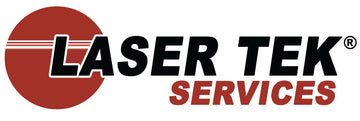What is common to both toner cartridges and solar panels? Both require energy to carry out its respective operations and work efficiently. Solar panels need sunshine to store electrical energy into its storage batteries while cartridge units run on electrical energy to sustain the supply of DC voltage bias to its magnetic rollers. In the absence of solar energy, the solar panels will not be able to convey electrical energy into its batteries resulting to insufficient power supply in line with the underutilized energy storage bins. Meanwhile, the toner cartridge will not be able to supply adequate toner powder to form the raster graphic image and bond its particles on the media, to cause uneven toner delivery and consequent defects over printouts.
The magnetic rollers of toner cartridges drive printing performance because its sole responsibility is image development. Toner powder is stored with the cartridge’s toner hopper and controlled by the stationary magnet inside the magnetic roller sleeve. The voltage bias controlling the magnetic roller comes from the printer intensity setting that releases a fair amount of toner on the OPC Drum surface. This printer function increases or decreases print density depending on the user’s need while the amount of toner attracted to the magnetic roller sleeve is controlled by the rubber doctor blade. The static charge applied by the doctor blade on the toner particles keeps toner coat flushed to therefore allow its easy transfer to the OPC Drum’s surface.
Troubleshooting your laser printer? We might just have the printer maintenance tips you need.
To increase the repelling action of toner particles on the positively charged areas of the OPC Drum, an AC signal is applied to the magnetic roller sleeve that in turn improves toner density and provides contrast in the printed document. The transfer charge roller reinforces the capability of toner particles to cling to paper by placing a positive charge at the back of the paper. Meanwhile, the static charge eliminator weakens the attractive forces between the drum’s surface and paper. This is a vital feature necessary which allows paper to move smoothly under the drum’s surface or else, thin paper will just wrap around the drum. The formed image on paper moves into the fuser assembly for permanent bonding to paper fibers.
Now that completes the print cycle. Consequently, the wiper blade automatically institutes the removal of 10% toner lingering on the OPC drum surface. Cleaning is performed by the wiper blade – aided by the recovery blade, a component that channels leftover toner into the storage chamber. The Primary Charge Roller (PCR) will then introduce an AC voltage across the OPC drum’s surface that will erase whatever traces of residual image left on the drum’s surface. Again, a new print cycle begins as the OPC Drum is now ready for the PCR to deliver the negative bias voltage.
Is the OPC drum of your laser printer worn out? Shop for a compatible replacement now at http://www.lasertekservices.com and enjoy big savings.
Finally, when confronted with a damaged toner cartridge, think of the magnetic roller inside the cartridge. Just like the solar panel, the component needs adequate energy to function well.





